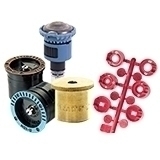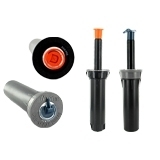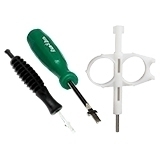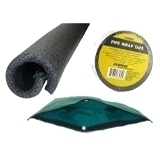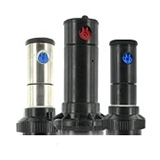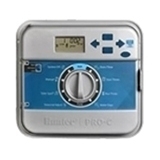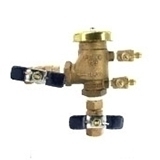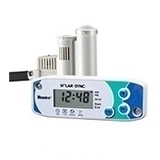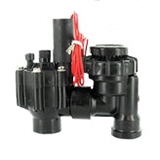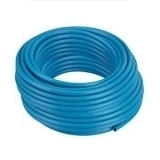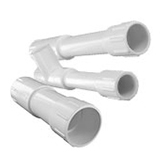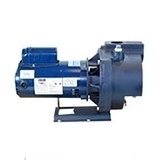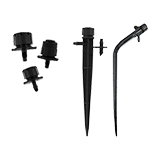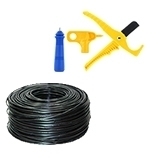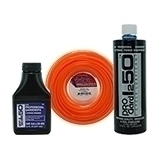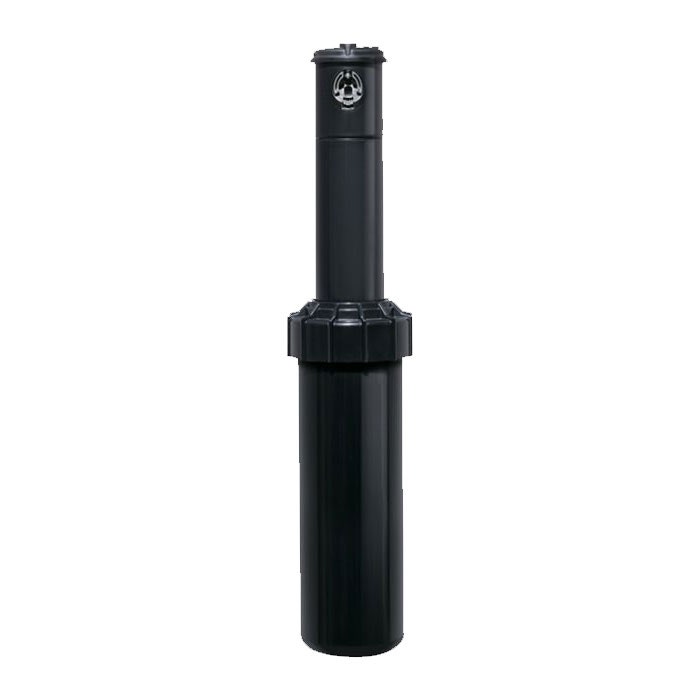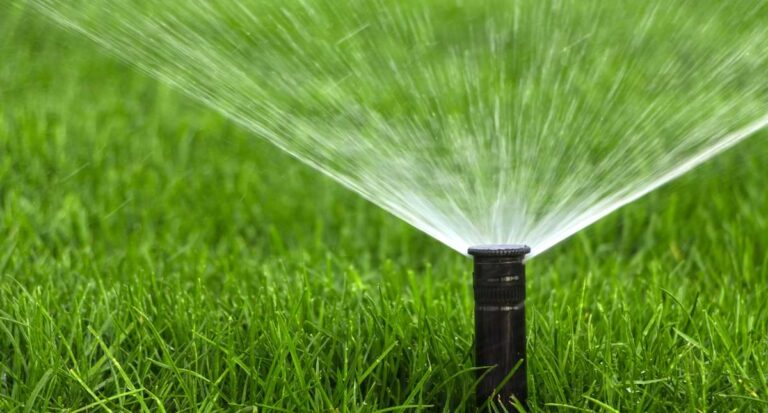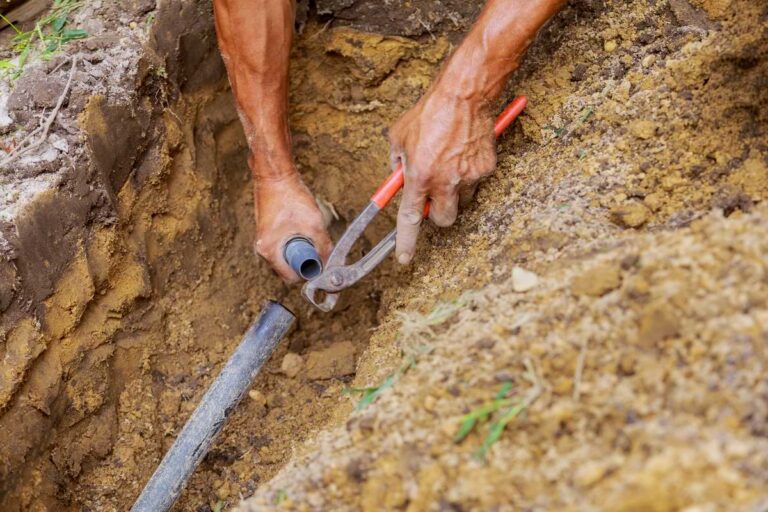How to Install a Sprinkler Valve Box
Table of Contents
How to Install a Sprinkler Valve Box
Sprinkler valves are the lifeblood of most in-ground irrigation systems, delivering water around your garden or lawn in seconds. A robust sprinkler system can save you a significant amount of time and effort, so it’s important to keep it in top shape. By installing a sprinkler valve box, you can do exactly that. Sprinkler valve boxes are protective enclosures that are set up around your underground valves, allowing for easy access while keeping the valves hidden and protected.
Installing a sprinkler valve box is relatively easy, yet crucial for establishing a reliable irrigation system. The process will require thoughtful planning (and a bit of digging), but if done properly, you’ll be laying the foundation for a system that runs efficiently, stays protected from the elements, and remains easy to service for years to come.
Choosing a Sprinkler Valve Box
Sprinkler boxes are available in several different shapes and sizes, each allowing you to accommodate different irrigation setups. Here are a few details to pay attention to when shopping for a valve box of your own:
- Size – Choosing the right size of valve box ensures that all your irrigation components will fit comfortably inside the box and remain accessible for future servicing. A small valve box may be fine for a single valve, but if you’re housing multiple valves on a manifold, you’ll need a larger box. Cramped boxes can make installation and repairs difficult, and may put pressure on pipes or wiring. A larger box will make it easier to troubleshoot leaks and replace parts without any further digging.
- Durability – A valve box is constantly exposed to the elements, ground pressure, and occasional foot traffic, so choosing one made from durable materials helps ensure the system remains intact. Look for boxes made from UV-resistant plastic or reinforced composite materials that can withstand the sun and moisture. The lid should also be strong enough to handle foot traffic or light mowing equipment if installed in grassy areas.
- Color – In terms of aesthetics, most valve boxes are available with either green or brown lids to blend in with grass or mulch. This helps the box stay discreet and preserve your landscaping aesthetics. Just be conscious of where the box will be placed and the predominant colors of the surrounding dirt, grass, and foliage.
- Other Features – Some boxes offer lids that lock or bolt down, preventing tampering by children, animals, or unauthorized users. This is especially useful in public areas. Other boxes include built-in drainage features to help prevent water from pooling inside. This can be especially helpful in clay-heavy or poorly draining soils.
Sprinkler Valve & Box Locations
Choosing the right location for your sprinkler valves and valve boxes is essential for creating a system that’s both efficient and easy to maintain. Ideally, valves should be installed close to the main water source to minimize pipe length and pressure loss. It’s also best to position the valve box in a central spot that provides balanced access to all irrigation zones. Avoid placing valve boxes in high-traffic areas such as walkways, driveways, or spots frequently mowed, as too much pressure can damage the box over time. Similarly, steer clear of locations with dense roots or heavy landscaping features that could block access.
Installing a Valve Box
Now let’s get into the meat and potatoes: how to install a sprinkler valve box. Once you’ve gathered all of your equipment and selected a location to set up your underground sprinkler valve, we can start digging!
1. Dig the Hole
Dig a hole large enough to comfortably fit the valve box, leaving extra room around the sides for working space and gravel drainage. The hole should be deep enough so the box sits slightly below or flush with the soil surface, allowing the lid to be level with the ground.
2. Prepare the Base
Add a layer of gravel or crushed rocks at the bottom of the hole. This base improves drainage and prevents water from pooling under the box, which can damage valves and wiring. Usually, two or three inches of rock will be plenty, but if you experience high rainfall or have an excess of nearby groundwater, you may want to add more.
3. Place the Valves
Assemble your sprinkler valves and manifolds, if applicable. Test-fit them inside the box to make sure they fit comfortably with enough room for wiring and pipe connections. After that, connect the valves to the mainline and lateral pipes. Now is also the best time to connect the valve solenoids to the wires.
For more detailed instructions on How To Install An Irrigation Valve, be sure to read our blog.
4. Set the Valve Box
Place the valve box over the valves, positioning it on top of the gravel base. Make sure the box is level and positioned so the lid will be flush with the ground. Adjust the hole or gravel as needed to get a good fit.
5. Test the System
Before backfilling the hole, turn on the irrigation controller to test each valve. Check for leaks, proper valve operation, and wiring functionality.
6. Fill Around the Box
Once everything is tested and working, carefully backfill around the valve box with soil, packing it gently to avoid shifting the box or damaging pipes and wiring. Avoid using heavy or rocky soil directly against the box.
Once this process is complete, you should have a fully functional sprinkler valve, perfectly housed in a valve box.
Benefits of Using a Valve Box
Setting up a valve box around your sprinkler system offers numerous advantages, with the most prevalent one being protection. Lawn equipment, foot traffic, pests, and harsh weather can all come into contact with your valves when they’re left out in the open, causing severe damage. This means that an underground valve box will extend the lifespan of your components, saving you money from replacements and repairs.
In addition to protecting your investment, valve boxes also facilitate quicker maintenance by providing easier access to your valves. Having all your valves in one designated, easily accessible spot means you don’t have to dig around or guess where lines are buried when it’s time for service. Plus, without a box, dirt and debris can start to build up around your valves, making the area less tidy and more difficult to manage. A valve box creates a controlled environment that keeps components clean and easy to reach for repairs or adjustments.
One common misconception is that a sprinkler valve box will be intrusive to your yard’s aesthetic, but that isn’t the case. Valve boxes are designed to sit flush with the ground and are usually topped with a green or brown lid that blends into your lawn or garden, keeping your yard looking tidy and professional.
What Goes into a Sprinkler Valve Box?
It’s probably no surprise that sprinkler valves go into a sprinkler valve box, but there are actually a number of other irrigation components that are commonly installed in these containers.
- Irrigation Valves – Inside a sprinkler valve box, you’ll typically find any number of control valves that regulate the flow of water to different zones of your irrigation system. These valves are the heart of automated watering, responding to commands from your irrigation controller. By storing them in a centralized location, your irrigation valves will be easily accessible for repairs and seasonal adjustments.
- Various Wiring – In a sprinkler valve box, you’ll typically find low-voltage control wiring that connects the irrigation valves to the sprinkler timer or controller. Since valve boxes are buried underground and exposed to moisture, the wires are usually joined using waterproof wire connectors.
- Battery-operated Controllers – Battery-operated controllers are commonly used in areas that lack access to a power source, making battery-powered systems ideal. Most battery-operated controllers are mounted directly to the valve inside the box.
- Flow Meters – Flow meters are typically used in irrigation systems to help monitor water usage and detect leaks. They sometimes appear inside a valve box, but it’s worth noting that the most common location for a flow meter is near the main water source.
- Drainage Base – A drainage base is a layer of gravel or crushed rock that is placed at the bottom of the box to help prevent water from pooling around the valves and wiring. Since valve boxes are buried underground, they’re naturally exposed to moisture from rain, irrigation runoff, and groundwater. Without proper drainage, this moisture can lead to short circuits or valve failure over time.
What’s In a Valve Box? Tap that Play Button!
A sprinkler valve box may seem like a small piece of your overall irrigation system, but its role is anything but minor. By properly installing an underground valve box, you’ll be protecting critical components from damage and wear. Next time you’re upgrading an existing setup or starting from scratch, remember that a valve box is a great investment.
FAQs on Setting up a Sprinkler Valve Box
How many valves fit in a valve box?
The number of valves that will fit in a sprinkler valve box depends on the size of the box and the layout of your system. Smaller boxes will usually only be able to fit one valve and are ideal for isolated zones or small garden areas. Mid-sized boxes generally accommodate two to three valves, making them a popular choice for standard residential systems. For larger systems or properties with multiple irrigation zones, some of the largest valve boxes can hold four to six valves, or sometimes even more if they’re mounted efficiently on a manifold.
How do you open a sprinkler valve box?
Most valve boxes have a removable lid that sits flush with the ground. To open it, look for a small notch or hand grip along the edge of the lid. Simply slide your finger into the notch and lift up the lid. For some boxes, you may need a flathead screwdriver to get a good grip on the lid. If the box has been in place for a while, dirt or grass may be packed tightly around the edges, so you might need to clear away debris before the lid will budge.
How do you drain a sprinkler valve box?
Draining an underground valve box helps prevent water buildup that can lead to mold growth or wire corrosion. With a proper drainage base, water should filter down into the soil automatically, but in some cases, you’ll need to drain the box on your own. Start by checking the side of the valve box to see if it has a drain valve. If present, simply open the drain valve to release the water. If not, you’ll need to use a small hand pump or cup to manually remove it.


